Sinan Wang
MultiRef: Controllable Image Generation with Multiple Visual References
Aug 09, 2025Abstract:Visual designers naturally draw inspiration from multiple visual references, combining diverse elements and aesthetic principles to create artwork. However, current image generative frameworks predominantly rely on single-source inputs -- either text prompts or individual reference images. In this paper, we focus on the task of controllable image generation using multiple visual references. We introduce MultiRef-bench, a rigorous evaluation framework comprising 990 synthetic and 1,000 real-world samples that require incorporating visual content from multiple reference images. The synthetic samples are synthetically generated through our data engine RefBlend, with 10 reference types and 33 reference combinations. Based on RefBlend, we further construct a dataset MultiRef containing 38k high-quality images to facilitate further research. Our experiments across three interleaved image-text models (i.e., OmniGen, ACE, and Show-o) and six agentic frameworks (e.g., ChatDiT and LLM + SD) reveal that even state-of-the-art systems struggle with multi-reference conditioning, with the best model OmniGen achieving only 66.6% in synthetic samples and 79.0% in real-world cases on average compared to the golden answer. These findings provide valuable directions for developing more flexible and human-like creative tools that can effectively integrate multiple sources of visual inspiration. The dataset is publicly available at: https://multiref.github.io/.
SENC: Handling Self-collision in Neural Cloth Simulation
Jul 17, 2024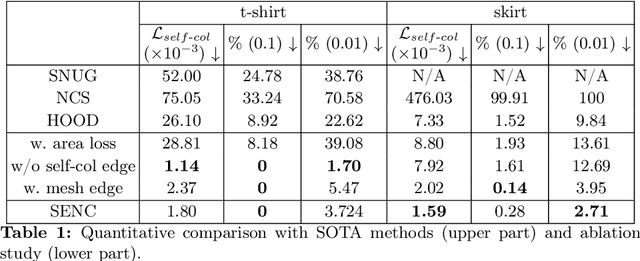
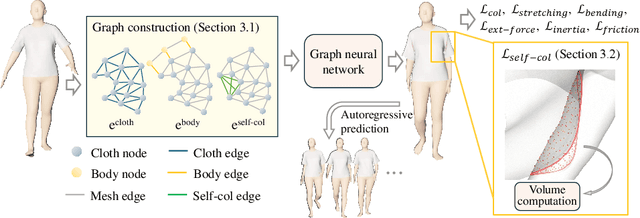

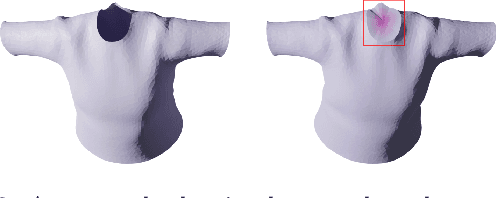
Abstract:We present SENC, a novel self-supervised neural cloth simulator that addresses the challenge of cloth self-collision. This problem has remained unresolved due to the gap in simulation setup between recent collision detection and response approaches and self-supervised neural simulators. The former requires collision-free initial setups, while the latter necessitates random cloth instantiation during training. To tackle this issue, we propose a novel loss based on Global Intersection Analysis (GIA). This loss extracts the volume surrounded by the cloth region that forms the penetration. By constructing an energy based on this volume, our self-supervised neural simulator can effectively address cloth self-collisions. Moreover, we develop a self-collision-aware graph neural network capable of learning to handle self-collisions, even for parts that are topologically distant from one another. Additionally, we introduce an effective external force scheme that enables the simulation to learn the cloth's behavior in response to random external forces. We validate the efficacy of SENC through extensive quantitative and qualitative experiments, demonstrating that it effectively reduces cloth self-collision while maintaining high-quality animation results.
Recommender Transformers with Behavior Pathways
Jun 13, 2022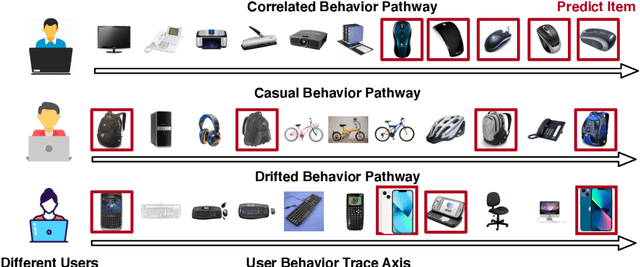
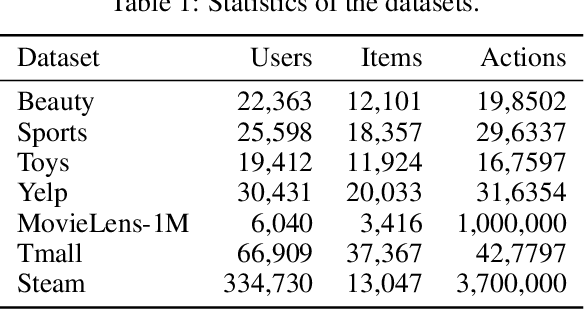
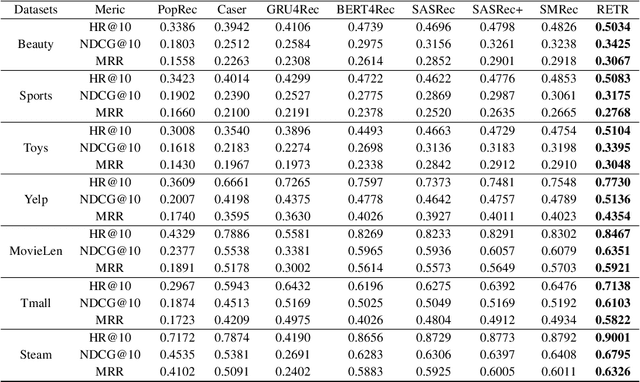

Abstract:Sequential recommendation requires the recommender to capture the evolving behavior characteristics from logged user behavior data for accurate recommendations. However, user behavior sequences are viewed as a script with multiple ongoing threads intertwined. We find that only a small set of pivotal behaviors can be evolved into the user's future action. As a result, the future behavior of the user is hard to predict. We conclude this characteristic for sequential behaviors of each user as the Behavior Pathway. Different users have their unique behavior pathways. Among existing sequential models, transformers have shown great capacity in capturing global-dependent characteristics. However, these models mainly provide a dense distribution over all previous behaviors using the self-attention mechanism, making the final predictions overwhelmed by the trivial behaviors not adjusted to each user. In this paper, we build the Recommender Transformer (RETR) with a novel Pathway Attention mechanism. RETR can dynamically plan the behavior pathway specified for each user, and sparingly activate the network through this behavior pathway to effectively capture evolving patterns useful for recommendation. The key design is a learned binary route to prevent the behavior pathway from being overwhelmed by trivial behaviors. We empirically verify the effectiveness of RETR on seven real-world datasets and RETR yields state-of-the-art performance.
MAMDR: A Model Agnostic Learning Method for Multi-Domain Recommendation
Mar 22, 2022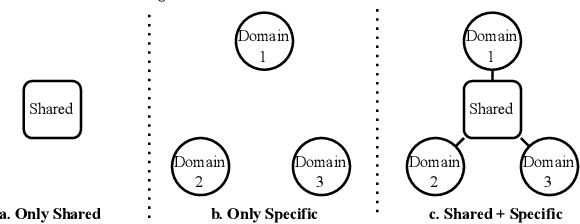

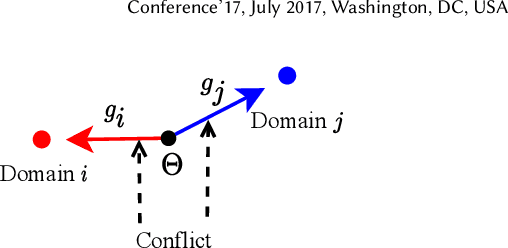
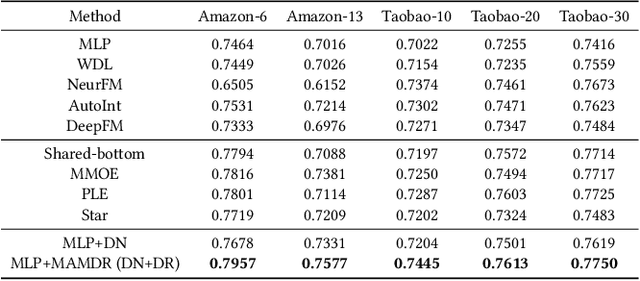
Abstract:Large-scale e-commercial platforms in the real-world usually contain various recommendation scenarios (domains) to meet demands of diverse customer groups. Multi-Domain Recommendation (MDR), which aims to jointly improve recommendations on all domains, has attracted increasing attention from practitioners and researchers. Existing MDR methods often employ a shared structure to leverage reusable features for all domains and several specific parts to capture domain-specific information. However, data from different domains may conflict with each other and cause shared parameters to stay at a compromised position on the optimization landscape. This could deteriorate the overall performance. Despite the specific parameters are separately learned for each domain, they can easily overfit on data sparsity domains. Furthermore, data distribution differs across domains, making it challenging to develop a general model that can be applied to all circumstances. To address these problems, we propose a novel model agnostic learning method, namely MAMDR, for the multi-domain recommendation. Specifically, we first propose a Domain Negotiation (DN) strategy to alleviate the conflict between domains and learn better shared parameters. Then, we develop a Domain Regularization (DR) scheme to improve the generalization ability of specific parameters by learning from other domains. Finally, we integrate these components into a unified framework and present MAMDR which can be applied to any model structure to perform multi-domain recommendation. Extensive experiments on various real-world datasets and online applications demonstrate both the effectiveness and generalizability of MAMDR.
 Add to Chrome
Add to Chrome Add to Firefox
Add to Firefox Add to Edge
Add to Edge